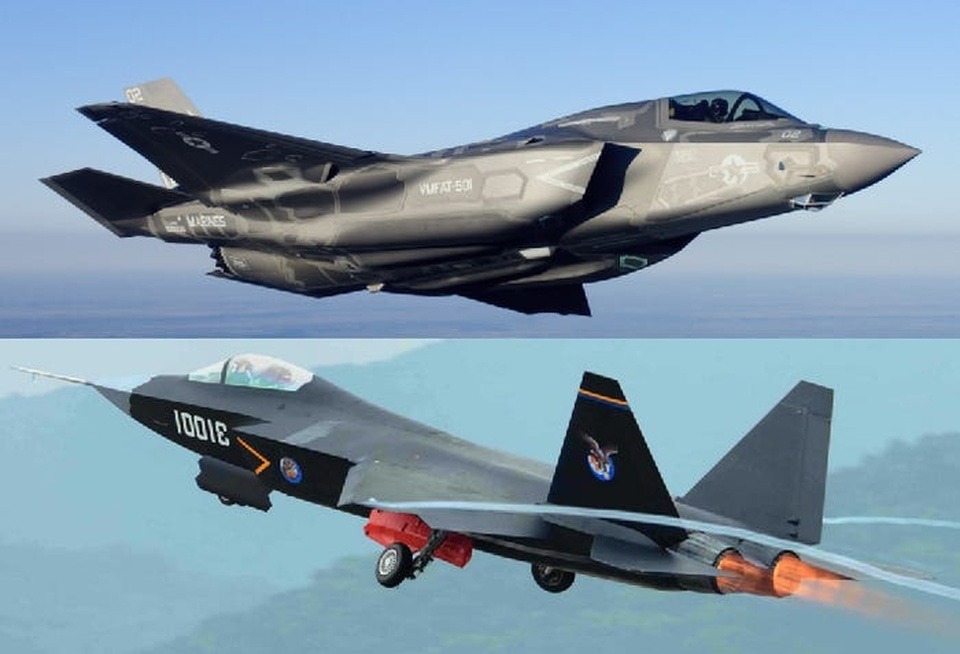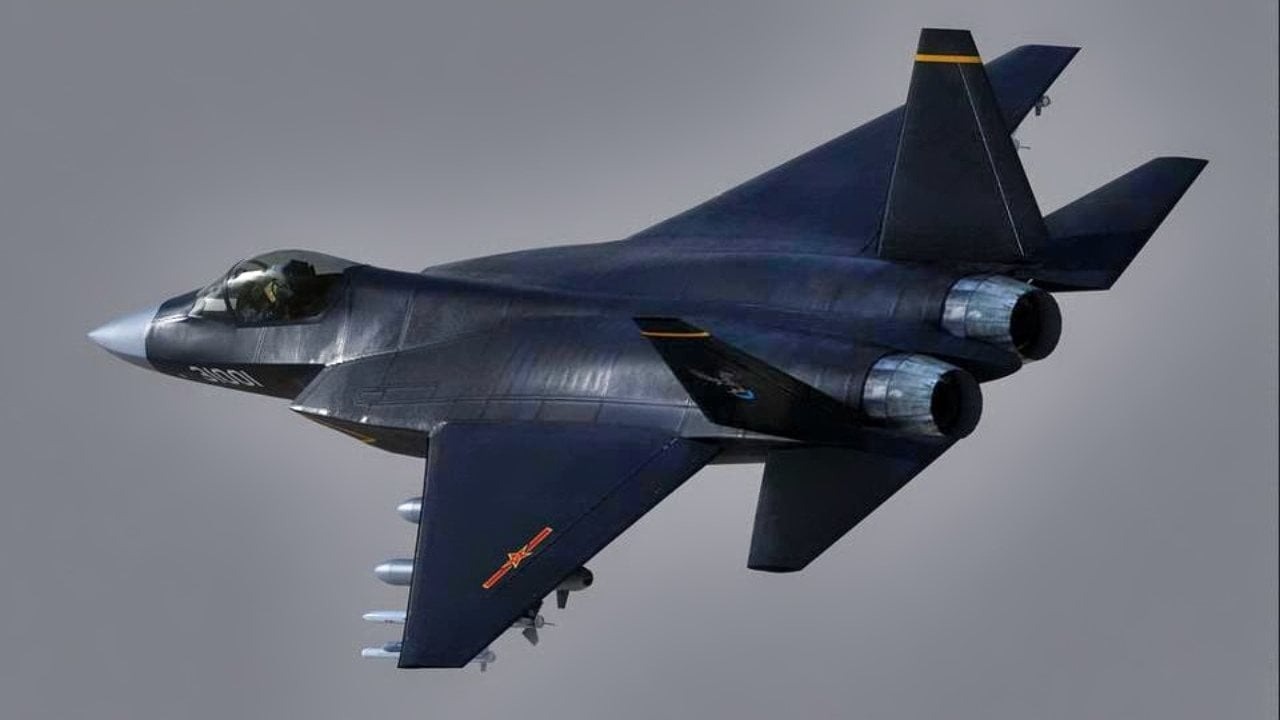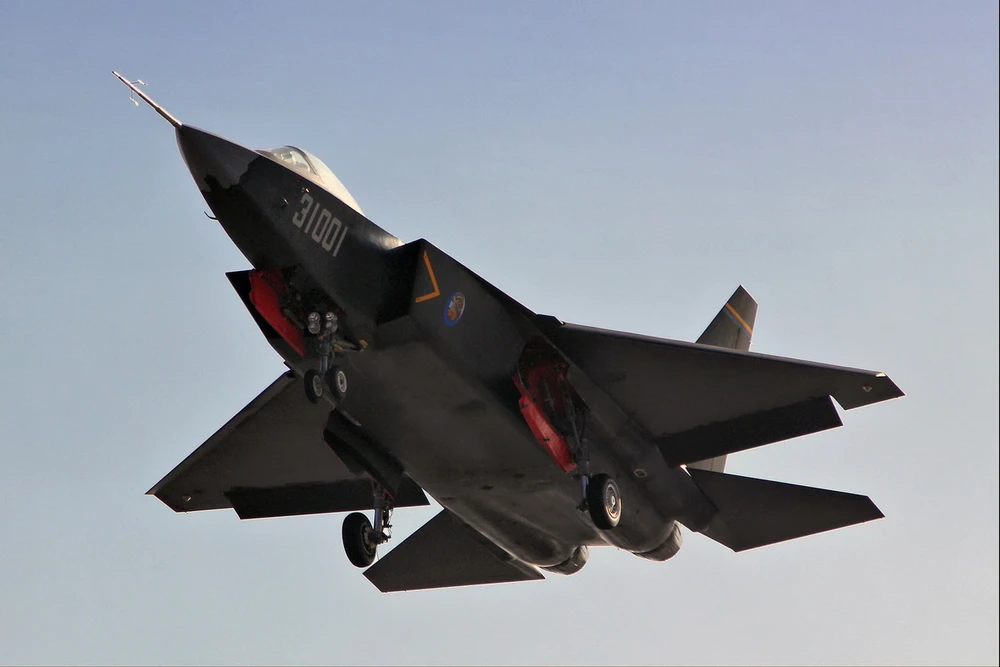China’s military ambitions have been making headlines for years, but the unveiling of the J-31 stealth fighter jet has sent shockwaves through the global defense community. This cutting-edge aircraft, also known as the FC-31 Gyrfalcon, represents a bold leap forward in China’s quest to rival the aerial dominance of the United States and its allies.

A Glimpse Into the Future of Warfare
The J-31 is China’s answer to the American F-35 and F-22, two of the most advanced stealth fighters in the world. Developed by the Shenyang Aircraft Corporation, the J-31 made its public debut at the 2014 Zhuhai Airshow, where it immediately captured the attention of military experts and enthusiasts alike.
With its sleek, angular design and advanced stealth capabilities, the J-31 is engineered to evade radar detection, making it a formidable adversary in modern air combat. The jet’s ability to carry a diverse array of weapons, including air-to-air and air-to-ground missiles, positions it as a versatile and lethal asset in any military confrontation.
The Technology Behind the J-31
The J-31’s stealth technology is one of its most talked-about features. The aircraft is designed with a reduced radar cross-section, making it difficult for enemy radar systems to detect and track. This capability is critical in modern warfare, where the element of surprise can be the difference between victory and defeat.
But stealth is just the beginning. The J-31 boasts twin engines, providing it with the speed and agility necessary to outmaneuver opponents in dogfights. Its internal weapons bays allow it to carry a wide range of munitions while maintaining a low radar profile, and its advanced avionics systems offer pilots superior situational awareness and targeting precision.

A Rising Threat?
The J-31’s development is seen by many as a direct challenge to American and allied air superiority. As tensions continue to simmer in regions like the South China Sea and Taiwan Strait, the J-31 could play a pivotal role in China’s military strategy. With its potential to be deployed from both land bases and aircraft carriers, the J-31 enhances China’s ability to project power far beyond its borders.
There are also rumors that the J-31 may be offered for export, making it a serious contender in the global arms market. If true, this could significantly alter the balance of power, particularly in regions where nations are seeking advanced fighter jets but are unable to obtain American or Russian models.
Controversy and Criticism
Despite the excitement surrounding the J-31, the aircraft has not been without its critics. Some analysts have pointed out that the J-31’s engines, which are currently based on older Russian designs, may limit its performance compared to the latest American stealth fighters. Additionally, questions remain about the jet’s overall stealth effectiveness and whether it can truly match the capabilities of the F-35.
There are also concerns about the potential for technology theft. Some experts believe that the J-31’s design may have been influenced by stolen data from American stealth aircraft programs, raising ethical and legal questions about the aircraft’s development.

The Future of the J-31
As the J-31 continues to undergo testing and refinement, its role in China’s military strategy will likely become clearer. Whether it will live up to its billing as a game-changer in aerial combat remains to be seen, but one thing is certain: the J-31 has already made its mark on the global stage.
For now, the J-31 stands as a symbol of China’s growing military prowess and its determination to challenge the dominance of Western air forces. As it continues to evolve, this stealth fighter could very well become a key player in the next generation of global military power.





